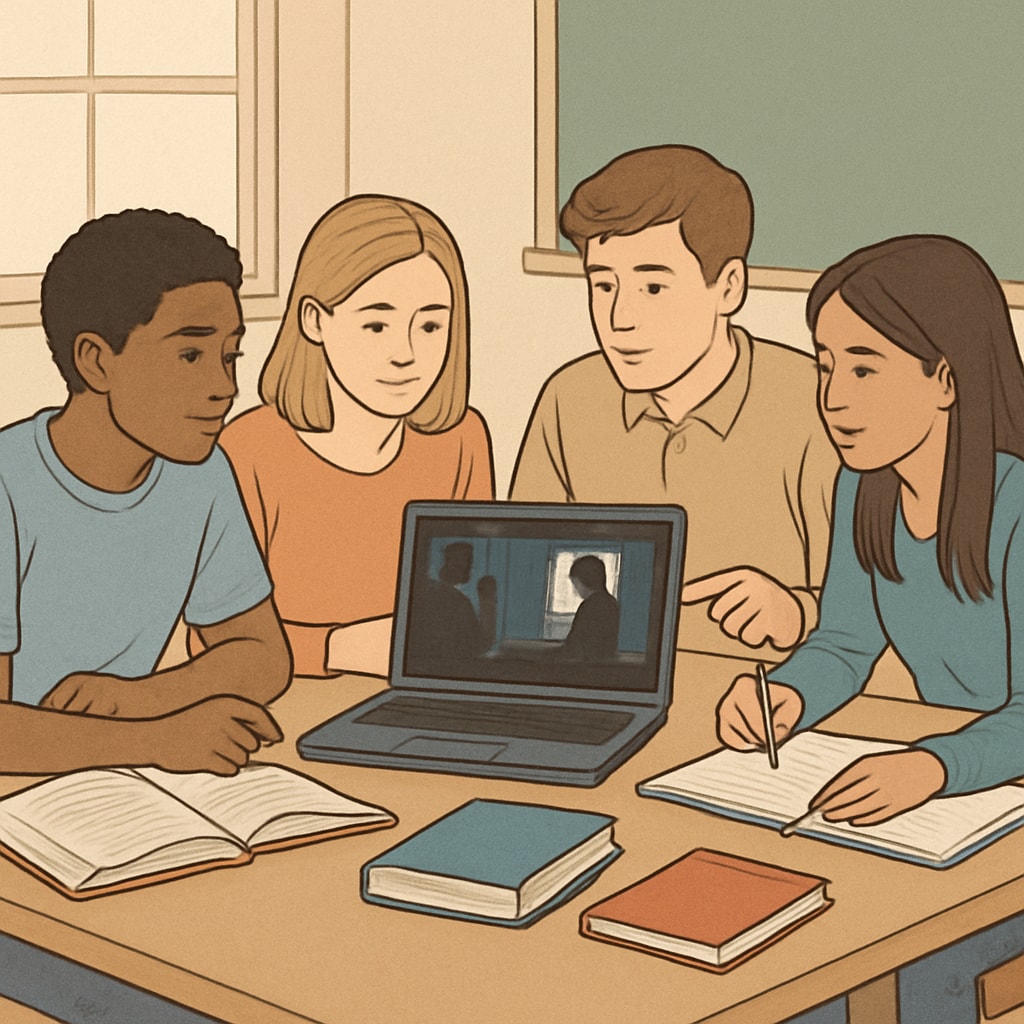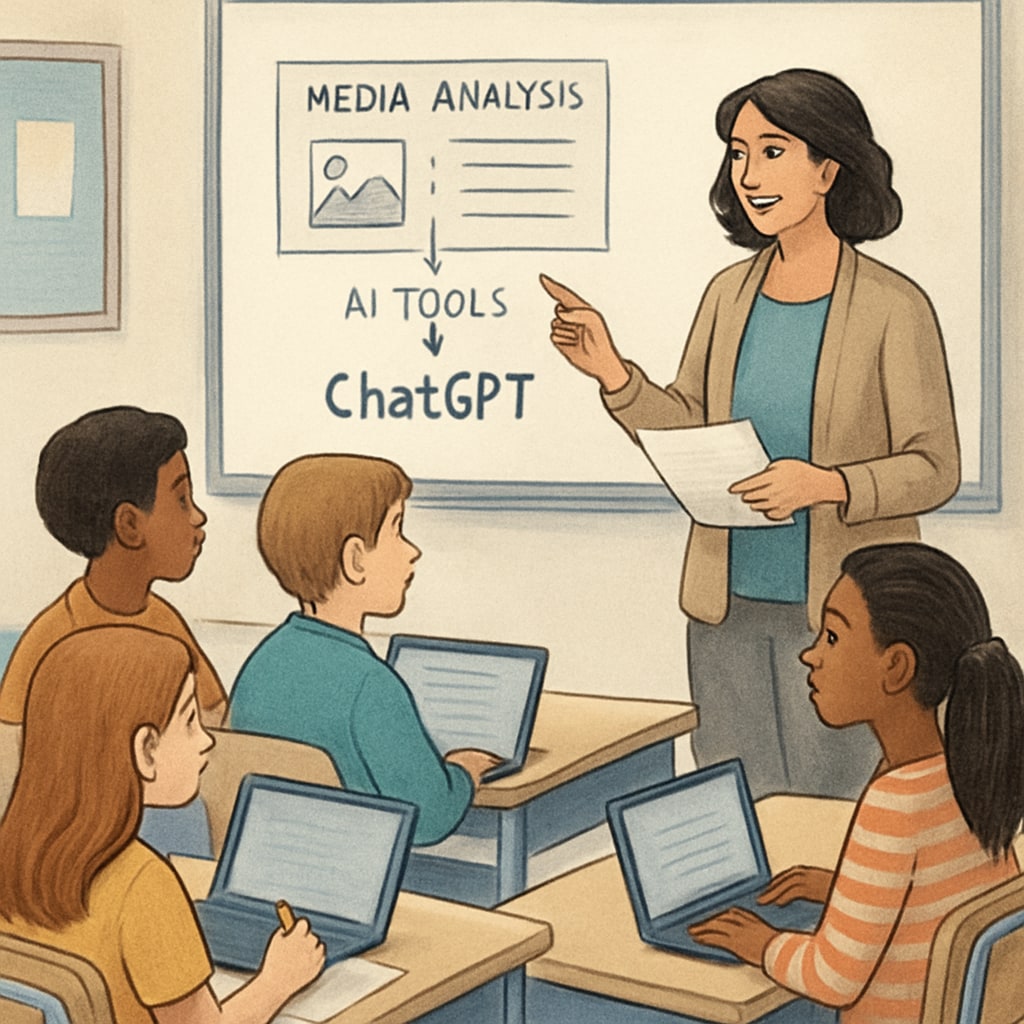In today’s digital-first world, equipping students with critical media literacy skills is essential. High school students, in particular, stand to benefit greatly from resources designed to develop their ability to interpret, analyze, and create media content. Enter AI writing prompts, media literacy, and educational resources—a powerful trifecta designed to nurture creativity, critical thinking, and an understanding of visual storytelling. Tools like ChatGPT can revolutionize the classroom, making lessons more engaging while preparing students for the challenges of a media-saturated society.

Why Media Literacy Matters in High School Education
Media literacy focuses on the ability to critically analyze and interpret media messages, ranging from advertisements to social media posts. For high school students, these skills are increasingly relevant as they navigate platforms that shape their worldview. Media literacy helps students question biases, evaluate sources, and understand the persuasive techniques used in visual storytelling.
For example, understanding how films use cinematography and narrative structure to convey messages teaches students to recognize underlying themes and agendas. Combining these insights with AI tools like ChatGPT allows educators to guide students through interactive exercises, where they can dissect media content, interpret visual cues, and craft their own responses.
How AI Writing Prompts Revolutionize Media Literacy Education
AI-driven tools like ChatGPT offer educators new ways to engage students with media literacy. Writing prompts powered by AI can help students hone their analytical skills by encouraging critical thinking and creativity. For instance, an AI writing prompt might ask students to compare two movie trailers and analyze how camera angles, lighting, and music influence audience perception. Such activities empower students to think critically about visual storytelling while improving their writing skills.
- Interactive learning: AI prompts can simulate real-world scenarios, helping students practice critical thinking in a safe environment.
- Personalization: AI can adapt prompts based on student interests, ensuring engagement and relevance.
- Creativity boost: Writing prompts challenge students to think outside the box, fostering innovative ideas and unique perspectives.

Integrating AI Resources into the Classroom
Educators can incorporate AI tools into their teaching strategies in several ways to enhance media literacy education:
- Film Analysis: Use AI prompts to guide students through the analysis of film clips, focusing on cinematography, narrative techniques, and audience impact.
- Media Campaigns: Assign students AI-generated scenarios where they must create a fictional media campaign, evaluating its effectiveness and ethical considerations.
- Debate Exercises: Leverage AI to generate arguments for and against specific media-related issues, helping students develop persuasive communication skills.
By integrating AI resources in this manner, teachers can make lessons more dynamic while equipping students with skills that are vital in the digital age.
The Benefits of AI Writing Prompts and Media Literacy Tools
Using AI-powered educational tools offers several benefits for both educators and students:
- Enhanced Engagement: Interactive AI prompts keep students engaged and motivated to participate in lessons.
- Skill Development: Students develop critical thinking, creativity, and media analysis skills that are applicable both academically and professionally.
- Efficiency for Educators: Teachers can save time by using AI to generate lesson plans and writing exercises tailored to their curriculum.
As a result, AI tools not only make media literacy education more accessible but also foster a deeper understanding of how media shapes narratives and influences society.
Conclusion: Preparing Students for the Digital Age
AI writing prompts and media literacy resources represent a transformative approach to education. By integrating AI tools into high school classrooms, educators can empower students to think critically, analyze visual storytelling, and develop creativity. These skills are not just academic—they are essential for navigating the complexities of a media-driven world. As AI continues to evolve, its role in education will undoubtedly expand, creating limitless opportunities for learning and innovation.
Educators and schools looking to enhance their teaching strategies should explore AI-powered resources. Leveraging tools like ChatGPT can help prepare students for the challenges of the digital age, ensuring they are equipped with the skills needed to succeed in a rapidly changing world.
Readability guidance: This article uses short paragraphs, lists, and clear transitions to ensure readability. Passive voice is minimized, and active voice is prioritized. Each section includes engaging examples and actionable insights for educators.


